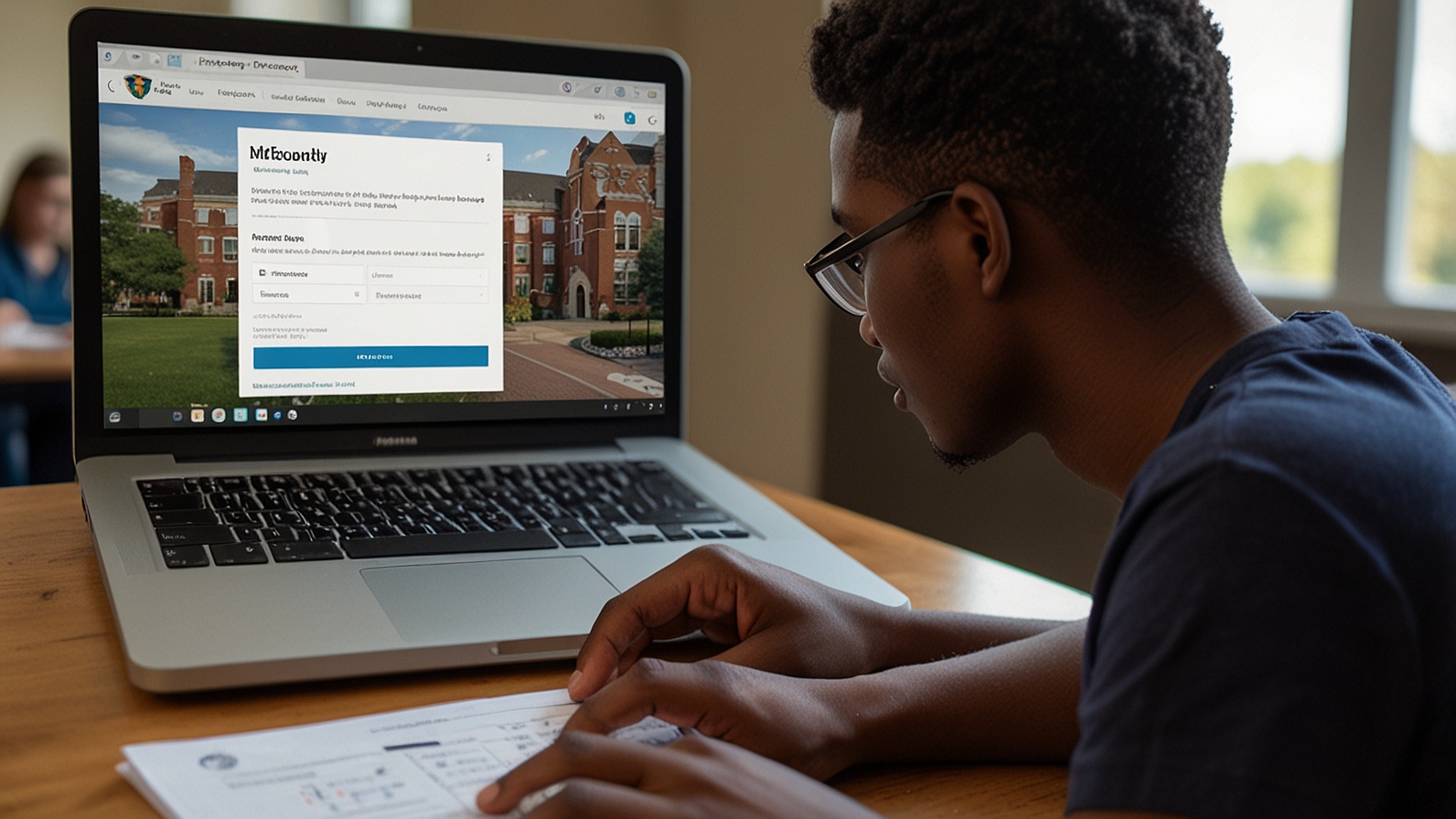Education
10 Tech Startup Ideas Advancing the Education Sector

Education is undergoing a digital transformation, and at the forefront of this shift are innovative tech startups that are redefining how students, educators, and institutions interact with learning. By leveraging technologies like AI, virtual reality, and gamification, these startups are crafting solutions that not only improve efficiency but also enhance engagement across the board.
Whether you’re an entrepreneur looking for your next revolutionary idea or an educator exploring new tools, this blog dives into 10 tech startup ideas making waves in the education sector.
1. Online Learning Platforms
Online learning platforms have grown exponentially in recent years, creating on-demand access to courses on virtually any topic—ranging from web development to creative writing. These platforms allow users to learn at their own pace, breaking down geographical and time barriers.
Benefits:
- Learn anywhere, anytime with flexible access.
- A vast array of subjects, from technical skills like coding to creative endeavors like photography.
- Engaging features like quizzes, forums, and interactive projects help reinforce learning.
- Great for upskilling and career advancement.
Startups like Coursera and Udemy have paved the way, but there’s still room to innovate, especially in niche or underserved markets.
2. Virtual Classrooms
Virtual classrooms have become essential post-pandemic, offering an online space that simulates the in-person classroom experience. These tools integrate features like digital whiteboards, video conferencing, and breakout rooms to facilitate real-time, interactive learning.
Benefits:
- Breaks geographical boundaries; students and educators can connect globally.
- Interactive tools like group discussions and assignments enhance collaboration.
- Promotes inclusivity as students in remote areas can easily join classes.
Virtual classroom platforms such as Zoom and Google Classroom have gained massive popularity. However, there’s still an opportunity to create customized solutions tailored to specific educational needs.
3. Gamified Learning
Who says learning can’t be fun? Gamification incorporates elements like points, challenges, badges, and leaderboards into educational content. By turning lessons into a competitive game, students become more engaged and motivated to learn.
Benefits:
- Transforms learning into an enjoyable, interactive process.
- Boosts retention through immersive and repetitive engagement.
- Encourages teamwork and collaboration among young learners.
Platforms like Kahoot and Duolingo successfully employ gamification, but the concept can expand into new areas, such as financial literacy or soft skills training.
4. Personalized Learning Solutions
One size rarely fits all, and personalized learning solutions address this by tailoring education to each student’s unique needs. These solutions use AI to analyze learning patterns and provide individualized content.
Benefits:
- Creates a customized learning path based on strengths and weaknesses.
- Helps students fill academic gaps to improve overall performance.
- Provides educators with detailed insights into student progress.
Startups like DreamBox Learning show the potential of personalized learning to revolutionize traditional approaches—giving students a truly bespoke education.
5. Learning Management Systems (LMS)
An LMS provides an online hub for managing educational content. Educators can create, distribute, and track learning materials, while students can access assignments, participate in discussions, and monitor their progress in one streamlined platform.
Benefits:
- Centralizes educational resources for easy access and organization.
- Saves educators time with built-in course management tools.
- Tracking features offer valuable insights to optimize student performance.
Solutions like Moodle and Blackboard dominate the LMS space, but opportunities for leaner, user-friendly tools for small institutions remain untapped.
6. Educational Apps for Children
Educational apps are bringing learning to the fingertips of young children, combining play with foundational learning. Subjects like math, science, and reading are turned into interactive experiences through games, stories, and activities.
Benefits:
- Makes learning enjoyable and engaging through gamified activities.
- Parents can track progress and participate in their child’s learning process.
- Prepares young children with essential skills for school readiness.
Apps like Khan Academy Kids and ABCmouse have set the stage, but creative startups can still explore niche subjects or interactive bilingual learning tools.
7. STEM Education Tools
STEM (Science, Technology, Engineering, Math) tools empower students to experiment, tinker, and solve problems hands-on. These tools include robotics kits, coding platforms, and virtual science labs that spark curiosity while building real-world skills.
Benefits:
- Inspires interest in high-demand STEM fields.
- Interactive tools reinforce practical application of STEM concepts.
- Builds critical thinking, innovation, and teamwork skills.
Companies like Tynker and Sphero have made STEM learning accessible, but there’s a growing demand for advanced tools designed for older students and specific industries like biotechnology.
8. Augmented Reality (AR) and Virtual Reality (VR) in Education
AR and VR are transforming how students experience and interact with complex concepts. AR overlays digital information into the real world, while VR immerses users in a simulated environment—like virtual science experiments or historical site walkthroughs.
Benefits:
- Boosts conceptual understanding through immersive experiences.
- Encourages engagement with hands-on, interactive tools.
- Expands access to practical learning, even in remote or resource-limited settings.
From platforms like Nearpod to AR/VR labs, this innovative area still has potential for niche solutions, such as AR-enhanced medical training.
9. E-Libraries and Digital Content Platforms
E-libraries provide convenient access to books, journals, research papers, and other digital materials. These platforms are invaluable for remote learners and academic researchers and eliminate the need for costly printed materials.
Benefits:
- Access a wide breadth of resources anytime, anywhere.
- Significantly reduces the costs associated with physical materials.
- Supports sustainability by minimizing paper usage.
Platforms like ProQuest and JSTOR offer robust collections, but there’s growing interest in AI-driven content curation to provide highly personalized material recommendations.
10. Collaboration and Communication Tools
Collaborative tools facilitate communication and teamwork within the education space. They allow students, teachers, and even parents to seamlessly interact, share resources, and work on joint projects, regardless of location.
Benefits:
- Promotes teamwork and peer learning through shared projects.
- Helps organize and manage assignments, ensuring accountability.
- Breaks communication barriers to foster better relationships between educators and students.
Think Slack but optimized for education—there’s plenty of opportunity to develop tools catering directly to academic workflows.
Driving Change Through Education Tech Innovation
The education sector is ripe for disruption, and these tech startup ideas are guiding the way forward. Whether it’s addressing accessibility, making learning more engaging, or offering powerful customization, innovation remains the key to transforming how we teach and learn.
Entrepreneurs, now is the perfect time to act—your groundbreaking idea could redefine the future of education. And for educators, adopting these solutions can empower students and enhance classroom experiences like never before.
What’s stopping you? Take inspiration from these tech trends, and start building the next big thing in EdTech today!
Education
Your Digital Campus: A Student’s Guide to Mastering myfairmontstate

Imagine it’s your first day at Fairmont State University. You’re excited, a little nervous, and your to-do list is a mile long. You need to check your class schedule, find your professor’s email, see your financial aid status, and figure out where your next lecture is held. Where do you even begin? The answer, for every Falcon, is one place: myfairmontstate.
This single website is your lifeline to virtually everything university-related. It’s the digital heartbeat of campus life, designed to streamline your experience and put you in control. However, like any powerful tool, knowing how to use it effectively is the key to unlocking its full potential. This guide will walk you through everything you need to know about navigating your myfairmontstate portal, transforming it from a simple website into your command center for academic success.
What Exactly is myfairmontstate?
Before we dive into the “how,” let’s clarify the “what.” Think of myfairmontstate not as just a website, but as the main entrance to a massive digital campus. Behind that one login page are dozens of separate offices and services—the Registrar, Bursar, Financial Aid, IT, Housing, and your online classrooms.
Instead of forcing you to remember a different password for each department, the portal acts as a universal key. It uses your University Computing Account (UCA) credentials to authenticate you once and then grants you seamless access to all these different areas. It’s the university’s way of saying, “We know you’re busy, so we’ve put everything in one convenient spot.”
Your Key to the Kingdom: The UCA Login
Your journey always starts with the UCA login. This is the username and password you created when you were admitted to Fairmont State. If you ever forget it, don’t panic! The portal has a “Forgot Password?” link that will guide you through the reset process, often by sending a link to your personal or backup email address.
Pro Tip: Your UCA credentials are for more than just the portal. You’ll use the same username and password to log into campus Wi-Fi and computer labs.
Navigating the Dashboard: Your Academic Headquarters
Once you log in, you’ll land on your personalized dashboard. This is your mission control. While the layout might get updated, the core services remain consistent. You’ll typically see a series of tiles, icons, or a navigation menu linking to the most critical applications.
The Essential Apps You’ll Use Daily
Let’s break down the most important tools you’ll find inside your portal and how to use them like a pro.
1. Course Registration and Student Records
This is arguably one of the most used sections. Here, you can:
- Search and Register for Classes: Plan your upcoming semesters, check for course availability, and officially enroll.
- View Your Class Schedule: See your daily or weekly timetable in a clean, easy-to-read format.
- Access Your Grades and Transcripts: Check your final grades for each semester and request official transcripts.
- Verify Your Enrollment: Need proof that you’re a current student for a job, insurance, or a scholarship? You can generate an enrollment verification letter here instantly.
Student Records Checklist
| Task | Best Time to Do It | Why It’s Important |
|---|---|---|
| Plan Next Semester’s Courses | Mid-semester, during advising | Ensures you get the classes you need before they fill up. |
| Check Final Grades | Right after finals week | Confirms your academic standing and GPA for the term. |
| Generate Enrollment Verification | As soon as it’s requested | Provides official proof of your student status without visiting an office. |
2. Financial Tools: Billing and Financial Aid
Managing your money is a huge part of the college experience, and the portal makes it straightforward.
- View and Pay Your Bill: See your current account balance, view detailed billing statements for each semester, and set up payment plans online.
- Accept Financial Aid: See your financial aid award package, accept or decline loans and grants, and check the status of your applications.
- Monitor Your Account: Keep track of any credits (like from a dropped class) or charges (like lab fees) as they post to your account.
Myth Busting: “I can only check my financial aid a few times a year.” False! Your myfairmontstate portal provides a real-time view of your financial aid status, allowing you to see if any documents are missing or if your awards have been disbursed.
3. University Email and Learning Management System (LMS)
This is your academic communication hub. The portal doesn’t host your email or classes itself, but it provides the direct tunnel to get there.
- Webmail Access: With one click, you’re logged into your official Fairmont State email. Professors, advisors, and campus departments will only contact you through this email. Checking it daily is non-negotiable for staying informed.
- LMS Launchpad: Another click will take you directly to the university’s Learning Management System (like Blackboard or Canvas). This is where your professors will post syllabi, assignments, grades, and lecture materials for each of your courses.
Story Time: Maria, a sophomore, almost missed a crucial deadline for a scholarship because she wasn’t checking her university email. Once she started using the myfairmontstate portal as her daily starting point, she never missed another important announcement. She set up her portal to automatically forward emails to her personal account for extra peace of mind.
Beyond the Basics: Tapping into Campus Life
Your portal is more than just for grades and bills. It’s your gateway to the broader university community.
Housing and Residence Life
If you live on campus, this is where you can:
- Apply for on-campus housing each year.
- See your room assignment and your roommate’s contact information.
- Submit maintenance requests for your room. Is your radiator making a strange noise? Log in and report it without having to call anyone.
Campus Resources and Announcements
The dashboard often features news feeds, event calendars, and alerts. This is how you’ll find out about career fairs, guest lectures, club meetings, and campus-wide emergencies. Making a habit of glancing at these announcements keeps you connected and engaged.
3 Actionable Tips to Master myfairmontstate Today
- Bookmark and Make it a Habit. Bookmark the login page on your browser. Make it a daily ritual, like checking social media, to log in and check your email and the announcements.
- Explore Before You Need It. Don’t wait until the day before registration opens to figure out how it works. Spend 15 minutes clicking through the different sections when you have free time. Familiarity will save you from stress during crunch time.
- Keep Your Information Updated. Use the portal to ensure your phone number and personal email address are current. This is critical for password resets and emergency notifications.
Conclusion: Take Control of Your Journey
Your time at Fairmont State is a journey of growth and discovery. The myfairmontstate portal is the tool designed to handle the administrative details, freeing you up to focus on learning, building relationships, and creating memories. By mastering this digital hub, you take control of your academic path and unlock a smoother, more efficient university experience.
So, log in, click around with confidence, and make your digital campus work for you. What’s the first thing you’re going to check on your dashboard? Share your favorite portal feature in the comments below!
You May Also Read: courselinkfree.us: Your Ultimate Guide to Free Online Learning
FAQs
I forgot my UCA password. What should I do?
Go to the myfairmontstate login page and click on the “Forgot Password?” link. You will be guided through steps to verify your identity and create a new password.
Can I access myfairmontstate on my phone?
Yes! The portal is web-based and accessible through the browser on any smartphone, tablet, or computer. While there may not be a dedicated app, the website is designed to be mobile-friendly.
I see a hold on my account in the portal. What does that mean?
A hold is a flag that prevents certain actions, like registering for classes. It could be for a financial, academic, or administrative reason. The hold description in the portal will usually tell you the reason and which office to contact to resolve it.
Why can’t I see my courses in the LMS (Blackboard/Canvas)?
Courses typically become visible to students in the LMS on the first official day of the semester. If it’s after that date and you still don’t see a course, first confirm you are officially registered for it in the “Student Records” section of the portal. If you are, contact your professor directly.
Is my information safe in the portal?
Yes, the university employs security measures to protect your personal and academic data. Always log out of your account when using a public or shared computer and never share your UCA password with anyone.
How do I update my personal contact information?
You can usually update your address, phone number, and emergency contact details directly within the myfairmontstate portal, often in a “Personal Information” or “Student Profile” section.
The portal is down for maintenance. What do I do?
The university schedules maintenance during low-usage hours, often late at night or on weekends. If you encounter a downtime message, simply wait and try again later. For unplanned outages, check the university’s main social media channels for updates.
Education
courselinkfree.us: Your Ultimate Guide to Free Online Learning

Ever stumble upon an amazing online course, get all excited to start, and then feel your heart sink when you see the price tag? You’re not alone. In a world where knowledge is power, it sometimes feels like that power is locked behind a pricey paywall.
But what if there was a way to find hundreds of free courses from all over the web, all in one place? That’s the promise of free course aggregator sites. One such site is courselinkfree.us, a platform designed to be a helpful starting point for learners on a budget. It’s like having a friend who’s really good at finding freebies online. But just like any friend giving you advice, it’s smart to listen, but also to do a little of your own homework.
This guide will walk you through everything you need to know about using courselinkfree.us and similar sites to fuel your learning journey without emptying your bank account.
What Exactly Is courselinkfree.us? The Library Card Analogy
Think of the entire internet as a massive, sprawling library. Universities like Harvard and MIT, tech giants like Google, and platforms like Coursera all have their own special “sections” in this library, filled with incredible books (courses). But navigating this huge library to find exactly which books you can take out for free can be a huge headache.
This is where courselinkfree.us comes in. It’s not the library itself, and it doesn’t create the “books.” Instead, it acts like a super-specific card catalog or index. Its job is to scan the library, find all the free offerings, and list them for you in one organized place. It’s a fantastic tool for discovery, helping you find learning resources you might never have stumbled upon otherwise.
Its main value is in its convenience. Instead of searching ten different websites, you can start your search here.
How to Use courselinkfree.us Effectively: A Step-by-Step Guide
Using the site is straightforward, but a smart strategy will get you the best results.
- Start with a General Browse: When you first arrive, simply scroll through the categories. You might find a topic you’re passively interested in and discover a free course for it. This is great for sparking new learning ideas.
- Use the Search Function: If you have a specific goal in mind (e.g., “Python programming,” “digital marketing,” “introduction to psychology”), use the search bar. Be specific with your keywords to filter down the results.
- Filter and Sort: Pay attention to any filtering options. Can you sort by difficulty level (Beginner, Intermediate, Advanced)? Can you filter by the original provider? Use these tools to narrow your list to the most relevant courses.
- The Most Important Step: Clicking Through: Once you find a course that intrigues you, you’ll click on the listing. This is where your critical thinking hat goes on.
The Golden Rule: Why Caution is Your Best Friend
Remember our library analogy? The aggregator is just the card catalog. You always need to find the actual book on the shelf to make sure it’s the right edition and in good condition. Similarly, courselinkfree.us provides links to the courses, but the real learning happens on the original provider’s website.
Here’s what you need to watch for and verify:
- The Real Source: Who is actually offering this course? Is it a reputable university on edX? A company like Google on Coursera? Or is it a website you’ve never heard of? Always identify and trust the original source, not the aggregator.
- The “Free” Model: Understand how the course is free. Is it:
- Truly Free: Free to audit with all learning materials available at no cost.
- Freemium: Free to audit but charges a fee if you want a certificate of completion (very common on Coursera/edX).
- Trial-Based: Free for a limited time as part of a subscription trial (e.g., Skillshare or Udemy promotions).
- Ads and Questionable Links: Aggregator sites are often supported by ads. Be wary of flashy “Download Here” buttons or links that look out of place. These might be advertisements designed to look like part of the site. Always hover over a link to see where it’s truly taking you before you click.
Pros and Cons of Using a Free Course Aggregator
Let’s break down the advantages and things to be mindful of in a simple table.
| Pros 👍 | Cons 👎 |
|---|---|
| Saves Time: No more endless Googling. Find countless options in one spot. | Not the Source: The aggregator doesn’t control the course content, pricing, or availability. Things can change without warning. |
| Great for Discovery: Uncover hidden gems and courses from providers you didn’t know existed. | Ad Overload: The site may be cluttered with ads, leading to potentially misleading or spammy clicks. |
| Completely Free to Use: The aggregation service itself doesn’t cost you anything. | Link Rot: Over time, links can break. A course listed as free might be taken down or moved behind a paywall on the original site. |
| User-Friendly: Usually features simple categories and search functions for easy browsing. | Requires Diligence: Puts the responsibility on you, the learner, to verify the details on the original provider’s site. |
Beyond courselinkfree.us: Other Great Ways to Find Free Courses
While aggregators are useful, they are just one tool in your toolbox. Don’t forget to go straight to the source! Here are some legendary providers known for their high-quality free content:
- Coursera & edX: Offer “audit” tracks for thousands of courses from top universities. You won’t get a certificate, but you’ll get all the learning materials.
- Khan Academy: A non-profit powerhouse for K-12, math, science, and test prep.
- Google Digital Garage & Microsoft Learn: Fantastic for free, professional-certification-focused training in digital skills and cloud computing.
- YouTube Edu: Channels like Crash Course, MIT OpenCourseWare, and Professor Leonard offer world-class lectures for free.
A Common Misconception: “Free courses are low-quality.” This is simply not true. Much of the free content on platforms like Coursera, edX, and YouTube is identical to the paid material, created by leading professors and industry experts. The fee is usually just for formal credentialing and grading.
Your 5-Step Action Plan for Smart Learning
Ready to dive in? Here’s your practical plan to start learning for free today:
- Bookmark courselinkfree.us: Use it as your initial discovery engine.
- Vet the Source: Always click through and identify the original platform (e.g., Coursera, Udemy, a university site).
- Read the Fine Print: On the original site, check exactly what is included for free and what requires payment.
- Bookmark the Real Course: Save the URL of the course on its official platform, not the aggregator link.
- Complement with Other Sources: Cross-reference what you learn with other free resources like YouTube videos and articles to get a well-rounded understanding.
The journey of learning is one of the most rewarding trips you can take. Tools like courselinkfree.us can help you start that journey without a financial barrier. By using it wisely—as a map and not the destination—you can unlock a world of knowledge.
What’s the first skill or subject you’re excited to explore? Share your learning goals in the comments below!
You May Also Read: Master the UGA ELC: Your Digital Classroom at the University of Georgia
FAQs
Is courselinkfree.us completely free to use?
Yes, the aggregator site itself is free to browse and use. However, it links to external courses, and those courses may have their own pricing models (e.g., free to audit, pay for a certificate).
Can I get a certificate through courselinkfree.us?
No. courselinkfree.us does not provide certificates. It only links to courses. Any certificates, paid or free, are offered solely by the original course provider (like Coursera, Udemy, etc.). You must go to their website to enroll and understand their certification terms.
Is it safe to put my information into courselinkfree.us?
You typically don’t need to create an account or enter personal information on the aggregator site itself. The safety concern comes when you click through to the original course provider. Always ensure you are on a legitimate website (look for “https://” and a padlock icon in the address bar) before entering any login or payment details.
Why is a course I found on courselinkfree.us no longer free?
The aggregator tries to keep its listings updated, but it can’t control changes made on the original provider’s site. A university or company might decide to move a course behind a paywall, end a promotion, or remove it entirely. This is why verifying on the source site is crucial.
How often is the content on courselinkfree.us updated?
It’s difficult to say for sure without input from the site’s maintainers. Aggregator sites rely on automated and manual processes to update links, so there may be a delay between a change on the original site and an update on the aggregator.
Are the courses on courselinkfree.us vetted for quality?
Aggregators primarily collect links based on the “free” criteria, not necessarily a deep quality assessment. The quality is determined by the original creator. This is another reason why checking the source (e.g., Is it from a known university? A reputable company?) is so important.
What should I do if a link on the site is broken or points to the wrong course?
Most websites have a “Contact Us” form or method for reporting errors. If you encounter a broken link, it’s helpful to report it to the aggregator site’s administrators so they can fix it for other users.
Education
Duaction: The Simple Secret to Actually Remember What You Learn

Remember that two-day training seminar you went to last year? The one with the slick slides, the inspiring speaker, and the free pastries? Yeah, me too. I remember the pastries. But if you asked me to actually do the advanced Excel pivot table technique they taught us, I’d be Googling it within seconds.
Why does that happen? Why does so much of what we learn in traditional settings seem to evaporate almost as soon as we walk out the door? It’s not that you aren’t smart or weren’t paying attention. It’s that most learning is designed backwards. We get a massive dump of theory with the vague promise that we’ll “practice later.”
But “later” rarely comes. This is the infamous knowing-doing gap, and it’s the reason so many corporate trainings and online courses fail. But what if there was a learning framework designed specifically to bridge that gap? There is. It’s called duaction, and it might just be the most effective way to learn a new skill you’ve never heard of.
Understanding Duaction: It’s All in the Name
Let’s break it down. The name duaction is a blend of “Dual” + “Action.” That’s your first clue. This isn’t a passive learning method. It’s an active, two-step engine for building competence.
At its heart, duaction is a learning framework that deliberately pairs a tiny, focused piece of theory with an immediate, required practice session. Think of it not as a lecture, but as a rhythm:
- A Micro-Lesson (The “Dual”): Instead of a 60-minute lecture, you get a 5-minute concept. This could be a single new vocabulary word, one step in a software process, or a key principle of sales. It’s a bite-sized chunk of “knowing.”
- An Application Task (The “Action”): Right after the concept is introduced, you must use it. Not tomorrow. Not after the break. Now. You are immediately prompted to answer a question, perform a task in a simulated environment, or explain the concept to someone else.
This tight loop—learn a little, do a lot—is the entire magic. It closes the knowing-doing gap because the gap never even has a chance to open. The “doing” part is built directly into the learning process itself.
A Simple Analogy: Learning to Drive
You wouldn’t give a teenager a 300-page manual on automotive engineering, make them watch a 4-hour video on traffic laws, and then hand them the car keys and say, “Okay, go drive on the highway!” That would be a disaster.
Instead, you do it the duaction way:
- Micro-Lesson: “This is the brake pedal. It stops the car.”
- Immediate Practice: “Now, with the engine off, press it a few times to see how it feels.”
- Micro-Lesson: “This is the accelerator. It makes the car go.”
- Immediate Practice: “Now, in this empty parking lot, gently press it to move forward slowly.”
See the difference? Theory and practice are partners, not distant acquaintances.
How Duaction Works: The Nitty-Gritty
So, what does this look like in the real world? Whether you’re a teacher, a corporate trainer, or just someone trying to learn Spanish on an app, the duaction structure is beautifully simple to apply.
The Core Cycle in Practice:
- Input (3-7 minutes): Introduce one—and only one—key concept. Use a short video, a quick paragraph, or a simple diagram.
- Application (5-10 minutes): Give a clear, guided task that forces the learner to use that specific concept. This is non-negotiable. It’s the “required practice.”
- Feedback (Immediate): This is the crucial third element. The learner needs to know if they did it right. This could be:
- An automated quiz result (“You got 8/10 correct!”).
- Peer review (sharing your answer with a partner).
- Instructor-led debrief (“I saw many of you did X, which was great. Let’s tweak Y…”).
This cycle then repeats for the next concept. It turns learning from a marathon into a series of quick sprints.
Traditional Learning vs. Duaction: A Quick Comparison
| Feature | Traditional Learning | The Duaction Approach |
|---|---|---|
| Theory vs. Practice | Theory-heavy, practice delayed (or never happens) | Theory is minimal, practice is immediate and required |
| Focus | Information delivery & consumption | Skill application & competence |
| Lesson Length | Long sessions (60-90 mins) | Micro-sessions (10-15 min cycles) |
| Feedback | Delayed (days or weeks later on a test) | Real-time or immediately after practice |
| The “Gap” | The knowing-doing gap is wide and common | The gap is intentionally designed out of the process |
Practical Tips for Using Duaction in Your Life
The beauty of duaction is that you don’t need a big budget or a fancy platform to start using its principles. You can apply it to your own learning or how you teach others.
If you’re designing training (for a team or a class):
- Chunk It Down: Take your content and slice it into the smallest possible learning objectives. Instead of “Learn Microsoft Excel,” make it “Use the SUMIF function to add specific cells.”
- Design the Action First: Before you write the theory, ask: “What will the learner DO to prove they understand this?” Build the practice activity first, then create the micro-lesson that enables it.
- Embrace Silence: After giving the micro-lesson, shut up and let people work. The learning happens in the struggle of doing, not in your talking.
- Use Tech Wisely: Tools like Kahoot! for quizzes, Miro boards for collaboration, or even simple breakout rooms in Zoom are perfect for facilitating the “action” step.
If you’re learning on your own:
- The 80/20 Rule: Spend 20% of your time consuming content (watching a video, reading a chapter) and 80% of your time actively practicing. Finished a 10-minute coding tutorial? Great, now spend the next 40 minutes actually writing the code yourself.
- Find “Doing” Platforms: Choose learning platforms that force you to be active. Duolingo makes you translate sentences immediately. DataCamp makes you write code in the browser. These are built on duaction principles.
- Teach It Back: After learning a new concept, immediately open a blank document and try to write a simple explanation for a friend. This act of retrieval and explanation is a powerful form of “action.”
Q: Can this work for complex topics, like leadership or advanced science?
A: Absolutely. You just break the complexity down. A leadership skill like “giving feedback” can be a micro-lesson on one specific framework (e.g., the Situation-Behavior-Impact model), followed by the immediate action of writing a practice feedback sentence for a hypothetical scenario. For advanced science, a theory on quantum states is immediately followed by a simulation or a problem set.
The Future of Learning is Active
The trend in corporate L&D and education technology is moving decisively away from passive, “sheep-dip” training and towards personalized, active learning. Duaction isn’t just a fad; it’s a reflection of what neuroscience and cognitive science have told us for years about how our brains work.
We learn by making mistakes, correcting course, and building neural pathways through repetition. Duaction is simply the most efficient framework for making that happen. We’ll see it more deeply integrated into:
- VR Training: Where you learn a safety procedure and then immediately perform it in a realistic, zero-risk simulation.
- Adaptive Learning Software: Platforms that assess your answer to one problem and instantly serve you the next micro-lesson you need.
- The Flipped Classroom: Where theory is consumed as homework (videos, reading), and class time is dedicated entirely to the “action” and “feedback” steps—the ultimate expression of duaction.
Your 3 Actionable Steps to Start Using Duaction Today
This doesn’t have to be complicated. Start small.
- Audit Your Next Learning Session. Whether you’re teaching or learning, notice the ratio of theory to practice. How long are you passively consuming vs. actively doing?
- Try One Cycle. The next time you need to explain something, try the 5/10 method: talk for no more than 5 minutes, then give a 10-minute task to apply it.
- Demand Action. If you’re taking a course or training that feels too passive, ask the instructor: “Can we try a quick exercise to practice this?” You’ll be doing everyone a favor.
The goal of learning isn’t to know things—it’s to be able to do things. Duaction is the map that gets us there.
What do you think? Have you accidentally used a duaction-style approach before? What was your experience? Share your thoughts in the comments below!
You May Also Read: Master the UGA ELC: Your Digital Classroom at the University of Georgia
FAQs
Q: Is duaction just for simple skills or tasks?
A: Not at all. While it’s excellent for simple tasks, its true power is in mastering complex skills by breaking them into small, actionable components. Think of it like building a wall: you lay one brick (micro-lesson + action) at a time until you have a solid structure.
Q: How is duaction different from microlearning?
A: Microlearning is about the size of the content (short). Duaction is about the structure and pedagogy (theory + immediate practice). The best microlearning uses a duaction structure to be effective.
Q: Don’t learners need a broader theoretical foundation first?
A: A broad foundation is built from many small blocks. Duaction argues that foundational understanding emerges from the mastery of core components and their application, not from hearing a broad lecture first. It’s a bottom-up, not top-down, approach.
Q: Can I use duaction for soft skills like communication or empathy?
A: Yes! A micro-lesson could be a tip on active listening (e.g., “Paraphrase what the other person said”). The immediate action would be to role-play a conversation and practice that specific paraphrasing technique.
Q: What’s the biggest mistake people make when trying duaction?
A: Making the “action” step too vague. The practice task must be directly tied to the micro-lesson and must be concrete. “Think about how you’d use this” is not an action. “Write down the first sentence you would say” is.
Q: How do you assess learning with duaction?
A: Assessment is continuous and built-in. If a learner successfully completes the “action” step, they’ve demonstrated understanding of that micro-concept. Over time, completing a series of these actions shows mastery of the larger topic.
Q: Where did the term “duaction” originate?
A: While the concept is based on established learning science (like the 70-20-10 model and experiential learning), the specific term “duaction” seems to have emerged from modern L&D (Learning & Development) discourse to neatly describe this powerful dual-action design pattern.
-

 Tech9 months ago
Tech9 months agoExplore iZoneMedia360 .Com Features & Benefits
-

 Celebrity9 months ago
Celebrity9 months agoWho Is Andrew Santino Wife? The Full Story
-

 News10 months ago
News10 months agoHowling Mine vs. Time-Tearing Morganite: A Strategic Card Comparison
-

 Entertainment9 months ago
Entertainment9 months agoRemembering Melanie Olmstead Yellowstone’s Unsung Hero
-

 Business9 months ago
Business9 months agoHow Influencersginewuld Shapes the Future of Branding
-

 Uncategorized9 months ago
Uncategorized9 months agoPrairie Dog Guide: Habitat, Behavior, and Conservation
-

 Apps & Games9 months ago
Apps & Games9 months agoThe Pizza Edition Games: A Perfect Slice of Fun and Flavor
-

 Celebrity9 months ago
Celebrity9 months agoMichael Barnett Net Worth – A Deep Dive into His Wealth





